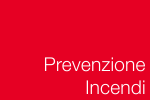HazChem@Work project to estimate occupational exposure chemicals
| ID 3859 | | Visite: 4099 | Documenti Sicurezza UE | Permalink: https://www.certifico.com/id/3859 |
Model to estimate the occupational exposure chemicals
The HazChem@Work project commissioned by DG Employment aimed at creating a database and developing a model to estimate the occupational exposure for a list of hazardous chemicals in EU countries and in the EFTA/EEA countries.
Service contract to create a database and develop a model to estimate the occupational exposure for a list of hazardous chemicals in the Member States of the European Union and in the EFTA/EEA countries No VT/2013/079
Despite long-existing EU legislation for workers’ protection and sometimes even longer national traditions, aggregated data on workplace risks from chemical exposure only exists at national level in a selected number of Member States. There has not been a collection of such data in a harmonised way at EU-level. Although employers are obliged to report on use of and exposure to carcinogens and mutagens (Directive 2004/37/EC), they only have to do this when asked by authorities; the same with the number of employees exposed to these substances.
There is no specific legal requirement to provide information on the exposed working population. Such information should be readily available for political decision-makers, trade associations, workers and unions.
The implementation of political measures and strategies for targeted workplace risk assessment and risk management requires knowledge on which substances are used at which workplaces (sectors, occupations) and via which technologies. The HazChem@Work project was initiated by DG EMPL to support implementation of EU OSH requirements on chemicals. The overall aim of the HazChem@Work database was to make available valuable information on the exposure of groups of workers to chemical agents in the EU Member States and the EFTA to allow interested stakeholders to access and use this exposure data for risk management measures at enterprise level and for improving occupational health, for example by setting priorities for prevention, regulatory risk management, as well as occupational disease recognition at national and European level, for example for:
- Policymakers developing risk assessment and management programs for workplaces Employers and safety and health practitioners assessing workplace risks and improving conditions
- The EU Commission and its Directorates that target further policies and worker protection programmes
- Substance manufacturers and importers conducting chemical safety assessments in the context of registrations under REACH etc.
The HazChem@Work addresses the following key questions:
1. Which hazardous substances are being used in EU workplaces?
2. What are the industries / employment sectors involved?
3. What type of companies (e.g. micro enterprises, SMEs and their proportion) are involved?
4. What are the use categories (e.g. sector of use, process categories as used in the REACH registration database)?
5. How many workers are exposed (e.g. per sector / per industry / per country)?
6. What is the type, level and duration of exposure to these workers?
7. What type of risk management measures (RMM) are in use and indication?
The HazChem@Work project started in September 2014 and ended in October 2106.
The consortium consisted of three partners (KOOP, INCDPM, BAuA (until January 2016)) and one subcontractor (Claudia Berg – design & development). The project was supported by a Monitoring Committee (MonCom) comprising members of the tri-partite Working Party on Chemicals -WPC (MS authorities, employer and worker representatives). The essential outcomes of the project are
- Collection of data from national databases and data sources in a harmonised way
- Methodological criteria for a list of substances, including the list itself
- Description of main challenges for the generation of exposure data on a collective level
- A database containing the data in an easily accessible way including instructions, update and maintenance plans and technical documentation
- An analysis of models for estimating exposure levels with recommendations for future use of models in the database.
- Recommendations for improvement and continuation of the HazChem@Work database
EC November 2016









































